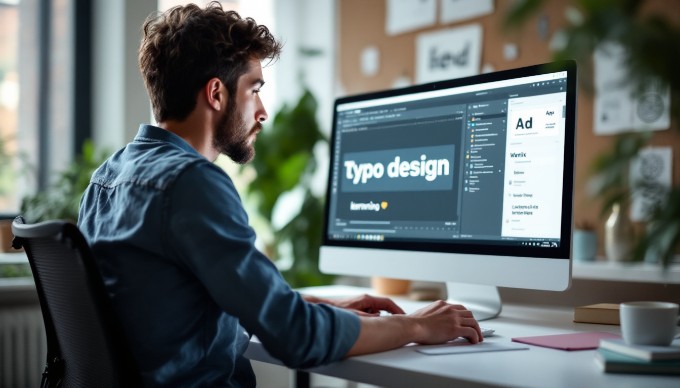Kerning vs spacing – understanding the differences in typography
Introduction to kerning and spacing
In the intricate world of typography, understanding the nuances between "kerning vs spacing" is crucial for creating visually appealing and readable text. Kerning refers to the adjustment of space between individual letter pairs to achieve a more harmonious appearance, while spacing encompasses the overall distance between words and lines, contributing to the flow and readability of the text. Both elements play a significant role in the art and science of typography, impacting how a message is perceived by the audience. Whether you’re designing a logo, crafting a website, or publishing a book, mastering the balance of kerning and spacing can enhance the aesthetic quality and effectiveness of your typographic endeavors. Dive into this article to explore why these subtle adjustments are vital and how they can transform ordinary text into an engaging visual experience.

Key differences between kerning and spacing
Understanding the nuances of kerning vs spacing is crucial for creating visually appealing and readable text layouts. Both techniques play a significant role in typography, affecting everything from readability to brand perception.
Kerning defined
Kerning refers to the specific adjustment of space between individual character pairs. It is commonly used in logo design and headlines where precise spacing can significantly impact aesthetics and readability. By adjusting the space between particular character pairs, kerning helps create a harmonious and balanced appearance in text.
Spacing defined
Spacing is a more general term that encompasses the overall space around characters. This includes letter, word, and line spacing, all of which contribute to the overall layout and flow of text. Proper spacing ensures that text is easy to read and visually appealing, affecting the reader’s experience and brand perception.
When to use kerning vs spacing
- Kerning is best used for specific pair adjustments, particularly in designs where precision is crucial, such as logos and headlines.
- Spacing should be considered for the overall text layout, impacting the readability and flow of paragraphs and entire documents.
Tools for adjusting kerning and spacing
Designers have various software options for adjusting kerning and spacing, including:
- Adobe Illustrator and Photoshop for manual adjustments
- Automated tools within word processors like Microsoft Word
- Typography-specific software like FontForge
These tools offer both manual adjustments and automated features to help achieve the best balance in text design.
Impact of kerning and spacing on design
Kerning and spacing significantly influence the aesthetics and functionality of text. Key impacts include:
- Improved readability and aesthetics
- Enhanced brand perception through thoughtful design
- Different considerations for digital vs print media, where spacing can affect legibility and reader experience
Best practices for achieving balance
To achieve optimal balance in text design, consider:
- Regularly reviewing and adjusting kerning for critical design elements
- Ensuring consistent spacing throughout your text for a cohesive look
- Testing designs across different media to maintain readability and impact
By understanding and applying the differences between kerning and spacing, designers can create text layouts that are not only visually appealing but also effective in conveying the intended message.

Expert graphic design services to elevate your brand. Book a call
Conclusion – the importance of kerning and spacing
In conclusion, understanding the nuances of "kerning vs spacing" is essential for anyone interested in mastering typography. Throughout this article, we’ve explored how kerning, the adjustment of space between individual characters, and spacing, the uniform distribution of space across text, both play pivotal roles in enhancing readability and aesthetic appeal. By focusing on these elements, designers can create visually appealing text that captures attention and communicates effectively. The impact of kerning and spacing on legibility, brand perception, and user engagement cannot be overstated.
As you delve deeper into the world of typography, I encourage you to experiment with both kerning and spacing in your design projects. By applying the insights shared here, you can refine your skills and discover how subtle adjustments can transform the look and feel of your text. Whether you’re designing a logo, crafting a headline, or setting body text, playing with kerning and spacing will open up new possibilities for creativity and precision. Embrace the opportunity to enhance your design work and let the art of typography elevate your projects to new heights.
Boost Engagement with Conversion-Driven Design
Enhance usability with optimized designs that convert users into customers.
Learn More